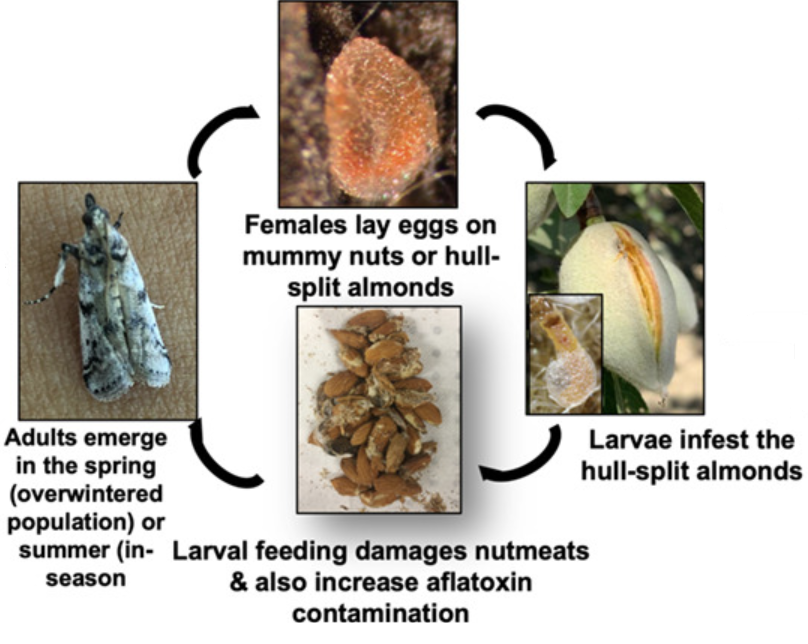Navel orangeworm abundance
Navel orangeworm abundance
Warmer temperatures over the past four decades have sped up the lifecycle of the navel orangeworm and led to the early emergence of adult moths. This sets the stage for navel orangeworms to multiply faster during the growing season, threatening California's multibillion dollar nut industry.
The navel orangeworm, Amyelois transitella, is a small moth that may look harmless, but its larvae pose significant challenges to California's nut crop industry. Larvae wreak havoc on the valuable pistachios, almonds, and walnuts grown in the Central Valley as they bore into nuts and consume the kernels. As warmer temperatures speed up navel orangeworm development, California’s agriculture will face increasing pressure from these pests. By analyzing trends in the navel orangeworm lifecycle, researchers can better understand how climate change impacts its development and devise more effective strategies to control it.
What does this indicator show?
Trends in the duration of each navel orangeworm generation, selected counties in the Central Valley (1979-2020)
This graph shows long-term trends (number of days per decade) in the time it takes the navel orangeworm to complete each generation over the past 41 years. Trends for Yolo, San Joaquin, Merced, Fresno, and Kings Counties are presented.
- After larvae overwinter in nuts, they become pupae in March and through early May. The peak emergence of moths occurs from late April to mid-May, depending on the location. Notably, the length of time for each generation progressively gets shorter.
- Over the past four decades, it has taken less time for navel orangeworms to complete their life cycles. The third and fourth generation lifecycles, which occur during the peak of the warm season, accelerated the most.
- These pests now have more generations each year than ever before. Yolo County, for instance, only had at most three generations each year in the late 1990s, but now a fourth generation has made its appearance.
Why is this indicator important?
- California is a leading producer of three major nut crops: walnuts, almonds, and pistachios. The navel orangeworm is considered the most damaging agricultural insect pest for these three important nut crops.
- As navel orangeworms cause more damage to crops, greater use of pest control and pest management techniques will become necessary.
- Tracking the lifecycle and development of navel orangeworms may provide clues to how other pests in California are responding or will respond to warmer temperatures. By monitoring changes in their lifecycles, growers can better anticipate and prepare for climate change impacts on agriculture and the environment.
Female moths lay eggs on the nuts and freshly hatched larvae feast on the kernel, rendering it unmarketable. The damaged kernels attract a fungus called Aspergillus, which produces a cancer-causing chemical called aflatoxin.


Credit: University of California Agriculture and Natural Resources(left, center); Pathak et al. (2021) (right)
What factors influence this indicator?
- Temperature plays a crucial role in navel orangeworm growth and development. Humidity, precipitation, and wind speed influence their body temperature and thus their overall growth development.
- Factors other than climate that can potentially influence the spread of this pest include biological controls, orchard sanitization in winter, timely pest control, and early harvest to decrease risks to nut crops.
Additional resources
- California Department of Food and Agriculture, Plant Health and Pest Prevention Services
- California Department of Pesticide Regulation, Pest Management
- University of California, Agricultural Pests

